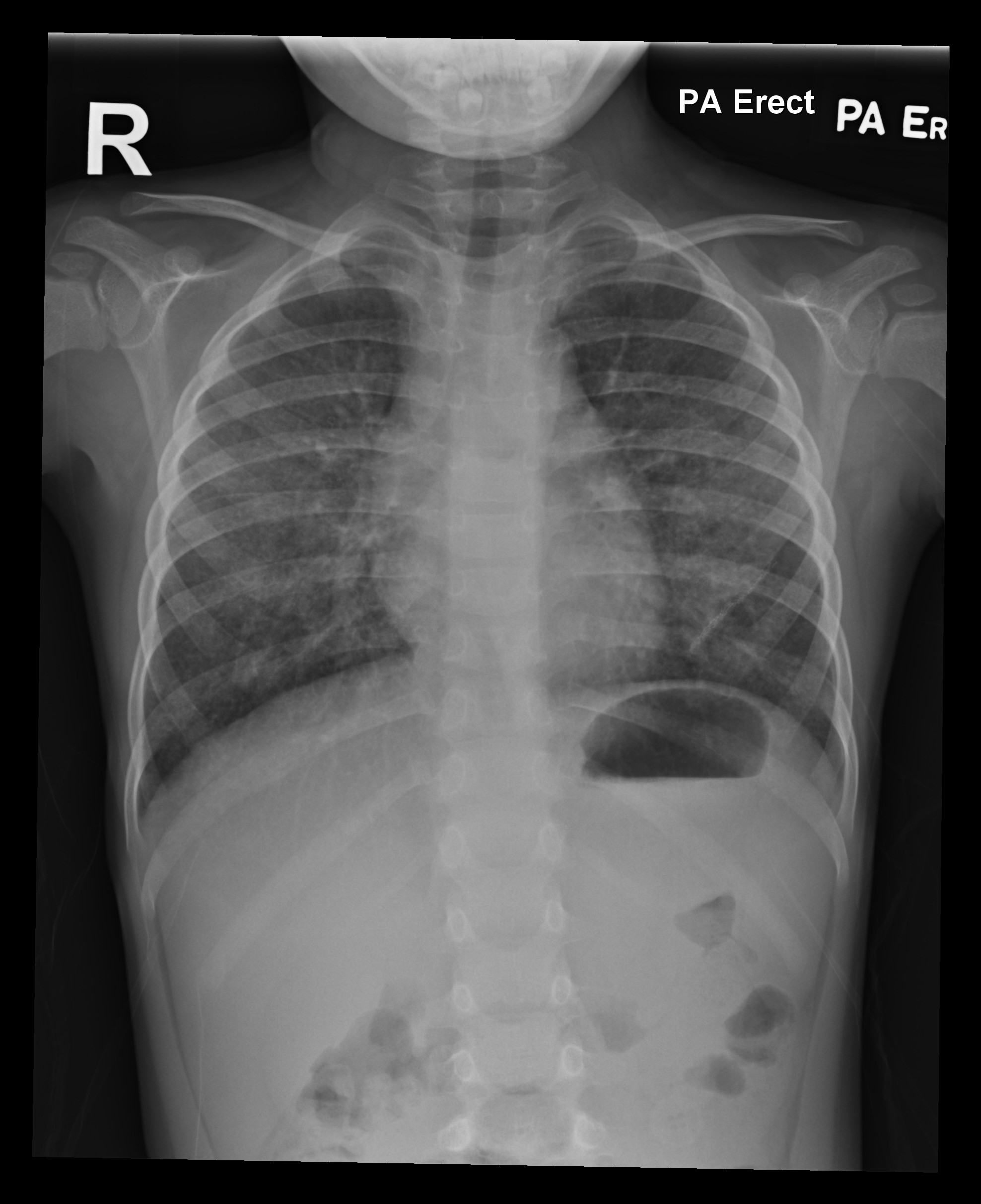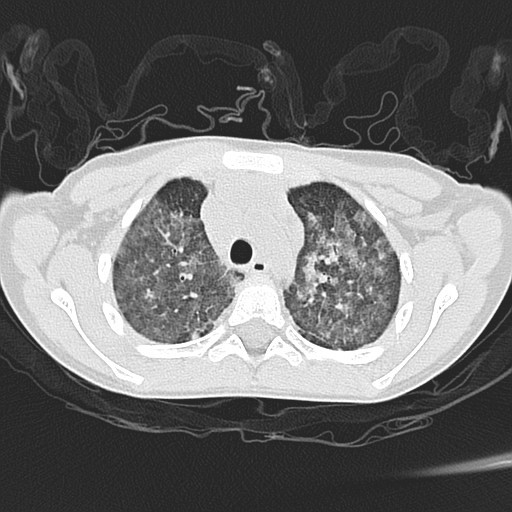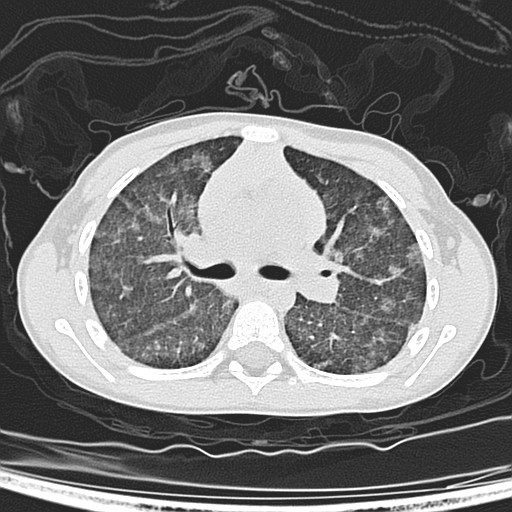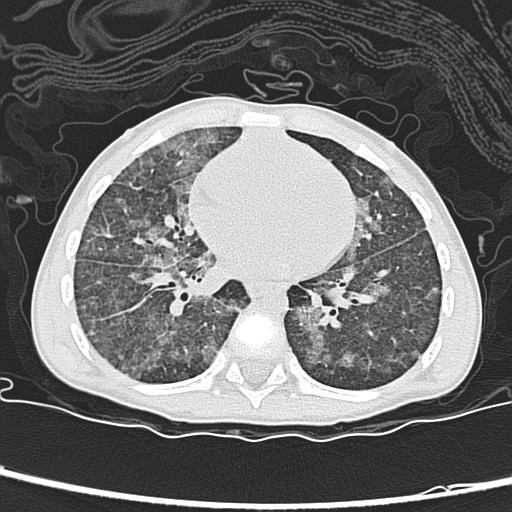Answer of January 2014
Clinical History:
A 3-years-old boy with multiple admissions for recurrent pneumonia, hemoptysis and chronic anemia.
Diagnosis:
Idiopathic pulmonary hemosiderosis
Discussion:
Idiopathic pulmonary hemosiderosis (IPH) is a disease with unknown etiology and symptoms are due to presence of diffuse alveolar hemorrhage, which will result in abnormal accumulation of hemosiderin in the lungs. IPH is a rare disease and most commonly occur in patients younger than 10 years old. Patients commonly present with repeated chest infection and occasional hemoptysis. Chest radiograph is usually non-specific and will show patchy infiltrates bilaterally, more at peri-hilar and lower zone regions and which will resolve, at least partially, after acute exacerbation with appropriate treatment. At a later stage, reticular pattern will also be seen as a result of fibrosis. High-resolution CT demonstrates large areas of diffuse groundglass opacities, some focal areas may show increased attenuation depends on the severity of alveolar hemorrhage. Smooth interlobular and intralobular septal thickening is also a common findings and represent diffuse pulmonary hemorrhage. Bronchoalveolar lavage and subsequent lung biopsy will usually be needed to make a definitive diagnosis, where there will be numerous haemosiderin-laden macrophages with red blood cells in the alveolar spaces. Majority of patients will respond quite well to oral corticosteroids. Other immunosuppression agents have also been used with variable results. However, prognosis of PIH is usually poor with average survival of about 3 years.




